Nathan the Machinist
KnifeMaker / Machinist / Evil Genius
Moderator
Knifemaker / Craftsman / Service Provider
- Joined
- Feb 13, 2007
- Messages
- 15,666
The topic of how to drill a hole comes up a lot here. A lot of people have problems drilling holes. I believe the problem is people aren't feeding hard enough. A lot of the advice, such as run as slow as possible and use lots of oil aren't really necessary. I think 90% of the problem is people aren't feeding correctly. So I've made this thread to illustrate that fancy cutters, fancy coatings, lube and slow speeds aren't necessary.
I'll start off with this old clapped out drill. No special coating, just an old American made HSS drill. It is already fairly dull.
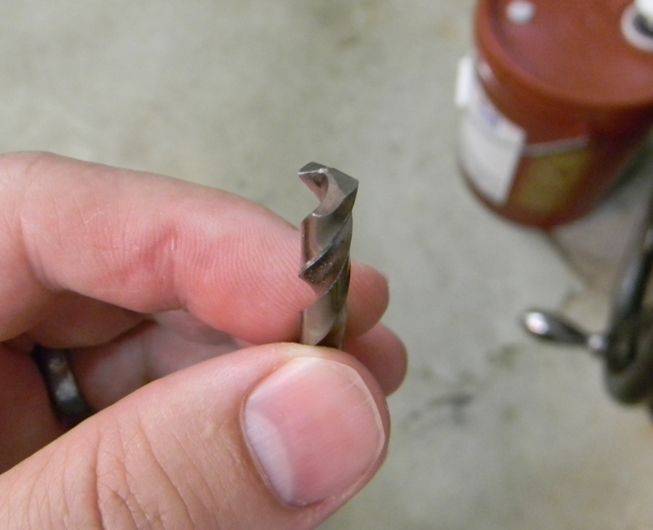
I'm gonna drill a bunch of holes in D2 at 660 RPM without coolant or oil.
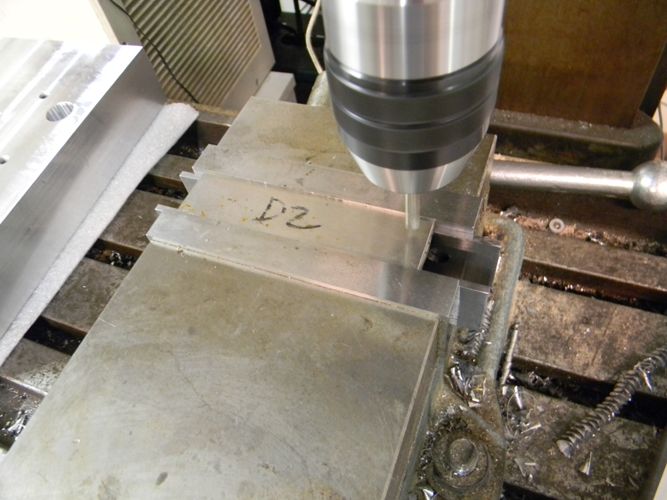
Wow. Looky there, no problems.
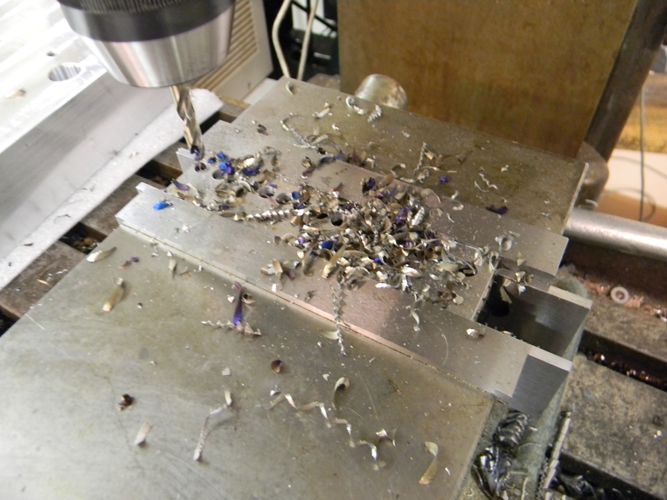
Movie of the cut:
[video=youtube_share;vAy11Fv4N7s]http://youtu.be/vAy11Fv4N7s[/video]
Technique is a little off because I'm drilling by hand and filming at the same time. You want to feed it moderately to get it started. Lift. feed it hard to cut. peck. feed it a little lighter as it exits the back of the hole. Once the web of the drill pokes through the back it is real easy to over feed and wipe out your corners. Blue chips aren't a good thing with HSS, but they aren't the end of the world either.
drill is fine.
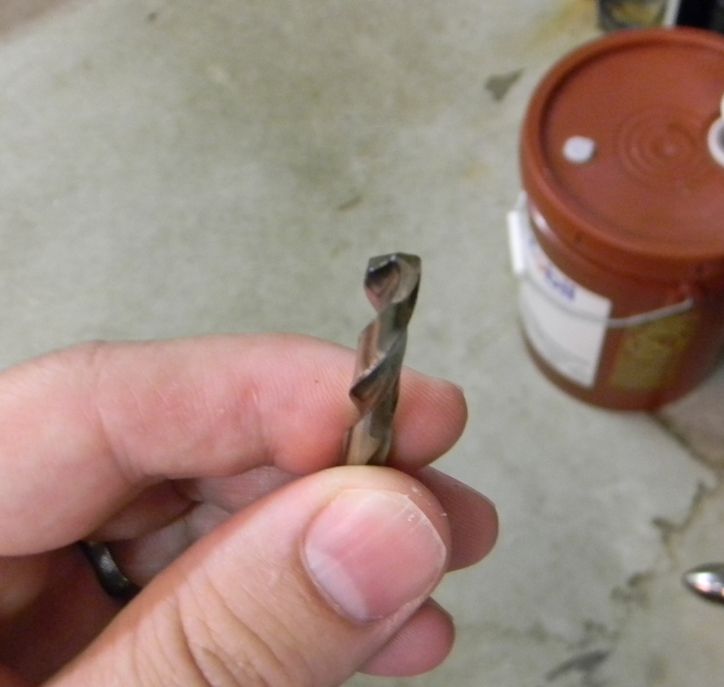
okay, lets try this again with a cheapass POS made in China drill. These are garbage. You would be hard pressed to find cheaper crap at wallmart. Don't be fulled by the gold colored titanium nitride coating, it is just for looks, it does absolutely nothing on drills of this quality in applications like this.
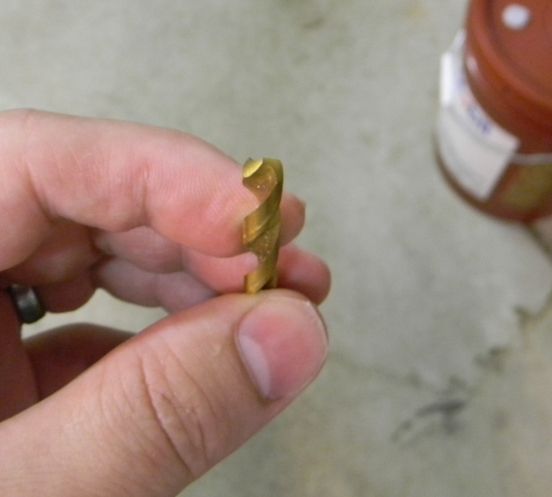
oops, overdid it and cooked it. cheap drill. :thumbdn:
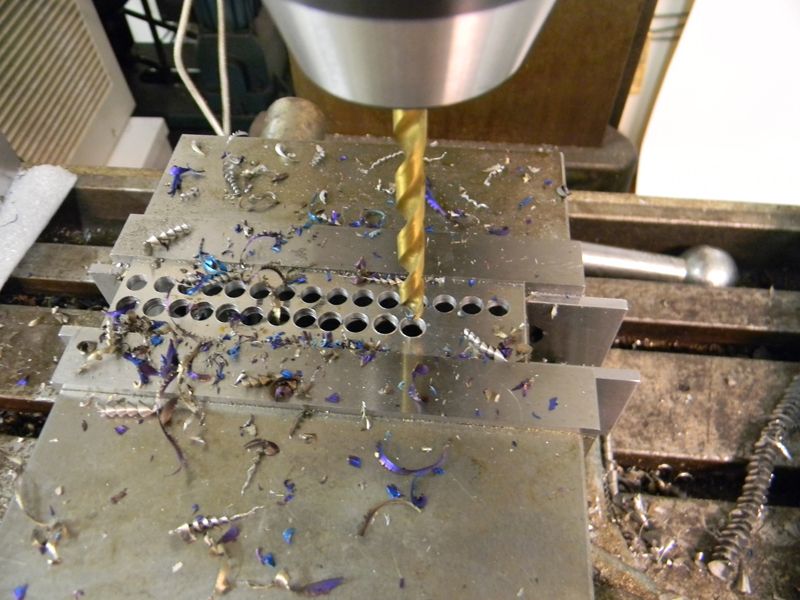

That's okay, three seconds on the grinder and it is better than new.

seriously folks. Three seconds. This is not rocket science. Anyone who can grind a knife can do this.
And done. This entire thing didn't take ten minutes
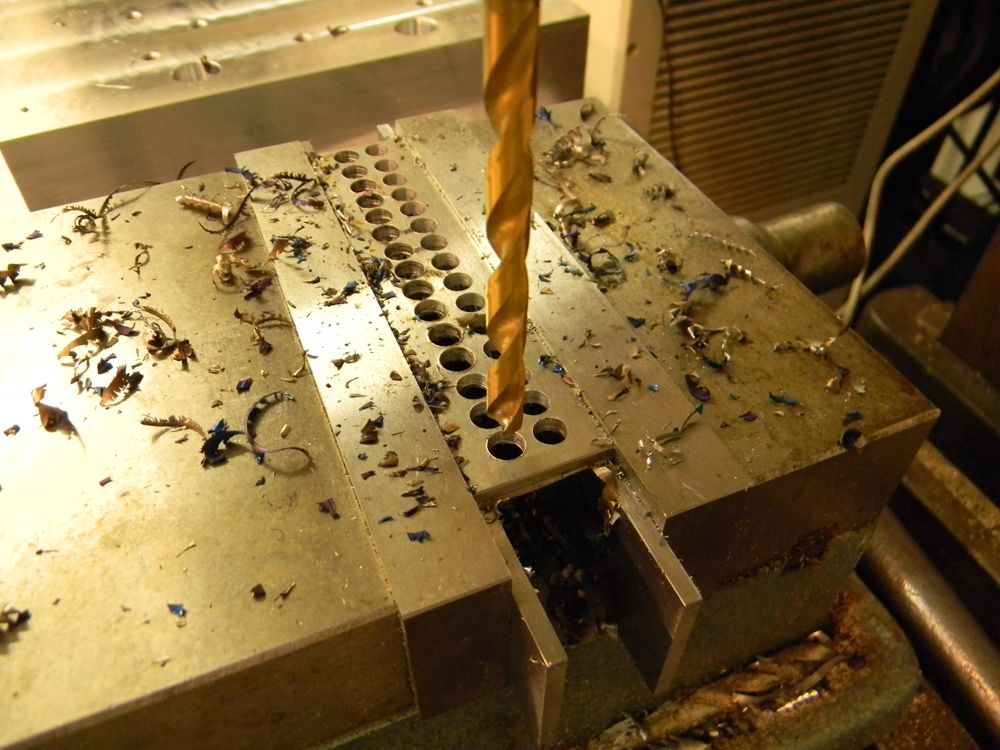
You'll notice the hole quality from the old used worn American made drill is much better than even the first hole drilled with the new China drill. Round holes, smooth bores, very little burr. But that was not the purpose of this exercise. It was to illustrate that even less than optimal drills can cut D2 just fine without all the slow speeds and oil if you'll just feed it correctly.
I recommend quality HSS made in USA drills. They last for hundreds of holes. In fact, in a machining center with controlled optimized speeds and feeds and flood coolant they can last thousands of holes. Slower speeds won't hurt you, but when running coolant I regularly drill 3/8" holes in D2 at 1000 RPM. Light cutting pressure and drilling so slow that the cutter just sits there spinning in its own fines work hardening the work piece is what is killing your drill bits.
edit: Just a sub note: Don't get me wrong, there is nothing wrong with using slower speeds and oil. You'll probably get better results. But they won't fix your problem if you're not feeding it correctly.
I'll start off with this old clapped out drill. No special coating, just an old American made HSS drill. It is already fairly dull.

I'm gonna drill a bunch of holes in D2 at 660 RPM without coolant or oil.

Wow. Looky there, no problems.

Movie of the cut:
[video=youtube_share;vAy11Fv4N7s]http://youtu.be/vAy11Fv4N7s[/video]
Technique is a little off because I'm drilling by hand and filming at the same time. You want to feed it moderately to get it started. Lift. feed it hard to cut. peck. feed it a little lighter as it exits the back of the hole. Once the web of the drill pokes through the back it is real easy to over feed and wipe out your corners. Blue chips aren't a good thing with HSS, but they aren't the end of the world either.
drill is fine.

okay, lets try this again with a cheapass POS made in China drill. These are garbage. You would be hard pressed to find cheaper crap at wallmart. Don't be fulled by the gold colored titanium nitride coating, it is just for looks, it does absolutely nothing on drills of this quality in applications like this.

oops, overdid it and cooked it. cheap drill. :thumbdn:


That's okay, three seconds on the grinder and it is better than new.

seriously folks. Three seconds. This is not rocket science. Anyone who can grind a knife can do this.
And done. This entire thing didn't take ten minutes

You'll notice the hole quality from the old used worn American made drill is much better than even the first hole drilled with the new China drill. Round holes, smooth bores, very little burr. But that was not the purpose of this exercise. It was to illustrate that even less than optimal drills can cut D2 just fine without all the slow speeds and oil if you'll just feed it correctly.
I recommend quality HSS made in USA drills. They last for hundreds of holes. In fact, in a machining center with controlled optimized speeds and feeds and flood coolant they can last thousands of holes. Slower speeds won't hurt you, but when running coolant I regularly drill 3/8" holes in D2 at 1000 RPM. Light cutting pressure and drilling so slow that the cutter just sits there spinning in its own fines work hardening the work piece is what is killing your drill bits.
edit: Just a sub note: Don't get me wrong, there is nothing wrong with using slower speeds and oil. You'll probably get better results. But they won't fix your problem if you're not feeding it correctly.
Last edited:

